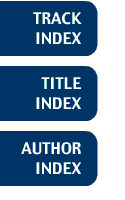
Track: Cartography and Map Production
Simulating the Interrupted Goode Homolosine Projection with ArcInfo

Kent LethcoeThe Interrupted Goode Homolosine projection (Goode's) is an interrupted, pseudocylindrical, equal area, composite map projection that can present the entire world on one map. Global land masses are presented with their areas in proper proportion, with minimal interruption and minimal overall distortion. Vector and raster data in Goode's projection are available to the spatial data community from a variety of sources. One of these sources is the U.S. Geological Survey (USGS) EROS Data Center (EDC). EDC currently provides imagery and derived data sets such as the Global Land one-kilometer advanced very high resolution radiometer) imagery of the world land masses, a corresponding raster land/water mask generated from World Vector Shoreline and Digital Chart of the World drainage layer sources, and the one-kilometer Global Land Cover Characterization data set. Future imagery such as the Moderate Resolution Imaging Spectrometer and SPOT vegetation imagery will also be provided in the Goode's map projection. These data can augment scientific investigations, but the user must be able to project data into and from the Goode's map projection in order to use these data sets with data in other map projections. The Interrupted Goode Homolosine map projection is composed from twelve discrete regions that combine to form six interrupted lobes. The two northern regions are often presented with land areas repeated in both regions, allowing these land areas to be shown without interruption. The Goode's projection currently is not explicitly supported in GIS software packages such as ArcInfo. Fortunately, it can be simulated by combining twelve instances of the Mollweide and sinusoidal map projections, both of which usually are supported in GIS software packages. Vector and raster data can be projected into Goode's projection by splitting it into the appropriate Goode's regions, projecting each region using its component map projection (Mollweide or sinusoidal) and offsets, and joining the reprojected regions into one data set. Vector data stored in other map projections have been projected into Goode's projection at product generation time in ARCPLOT. This was accomplished through the use of appropriate logical RESELECTs of features and the repeated use of the MAPPROJECTION environment.
Kent Lethcoe
U.S. Geological Survey
Sioux Falls, SD 57198
USA
Telephone: 605-594-6502
Fax: 605-594-2592
E-mail: lethcoe@edcmail.cr.usgs.gov